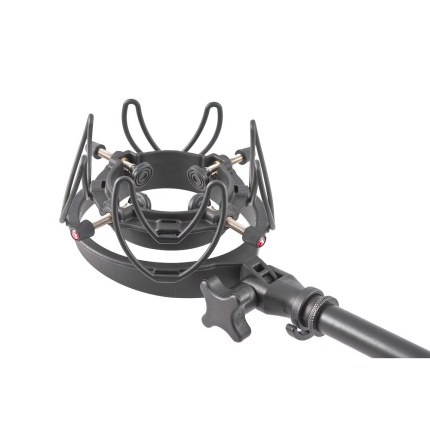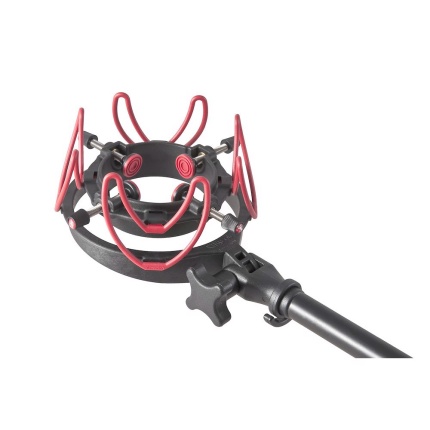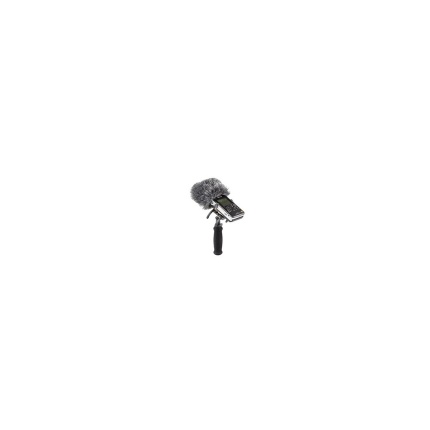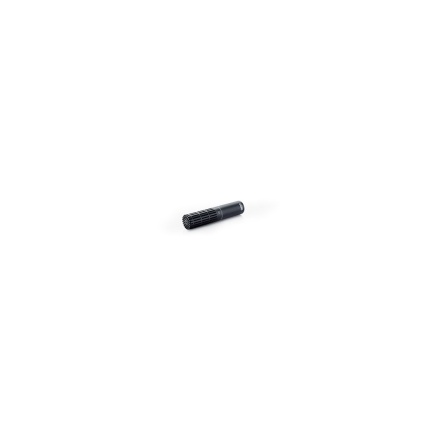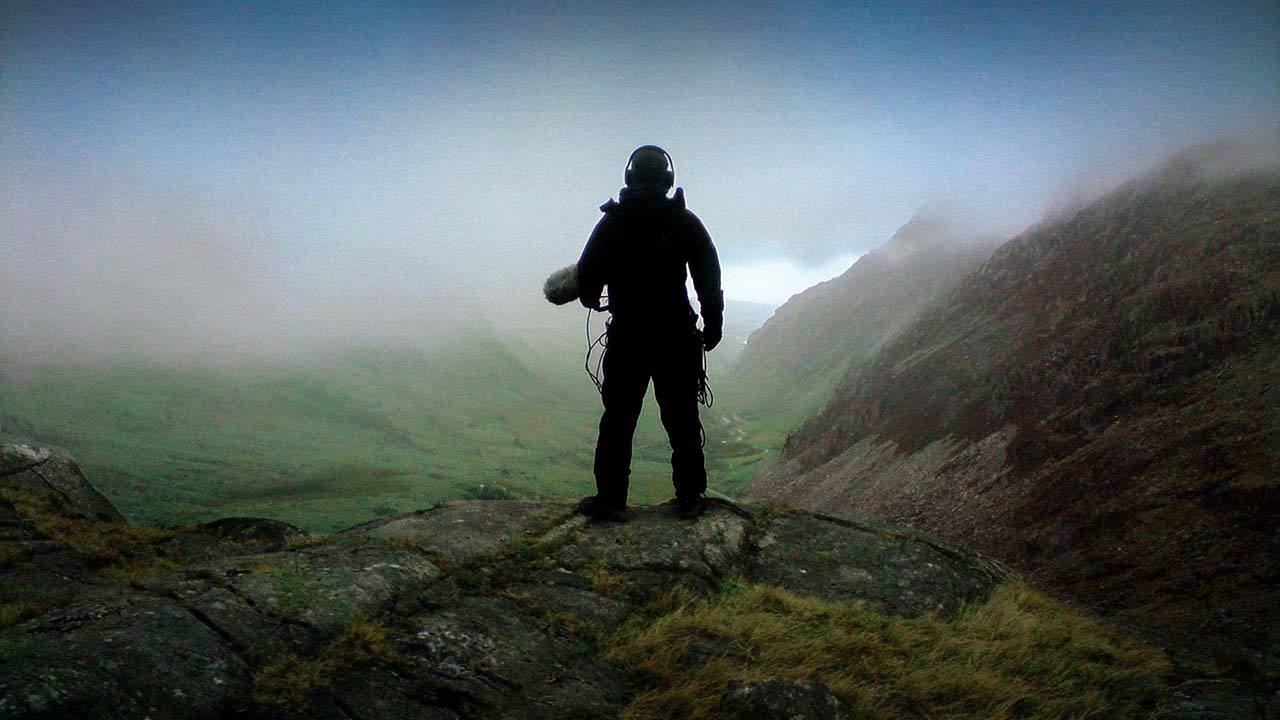



Interview Series
Never Look Back.
Pete Bailey is a highly experienced location sound recordist, whose significant list of credits includes Hollyoaks, Being Liverpool, The One Show, Captain America, ITV’s Good Morning Britain and the Oscar nominated The Voorman Problem.
In this interview, he describes his influences and work in the industry, and also offers some advice for aspiring sound professionals.
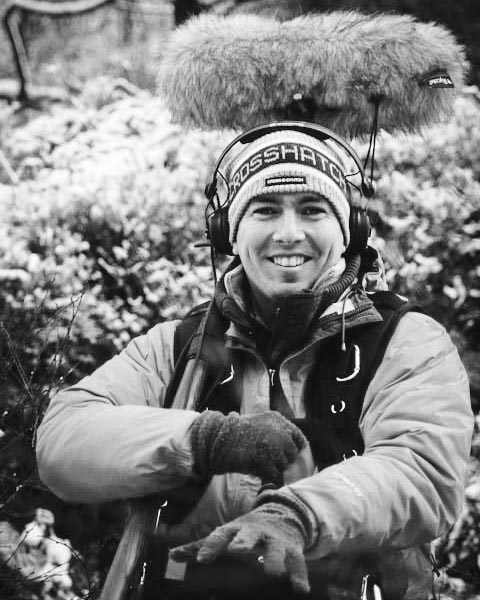

Tell us a bit about yourself.
My name is Pete Bailey, but on location people always shout, ‘Pete on sound’.
I live in Warrington, between Manchester and Liverpool, and I attended the School Of Sound Recording (SSR) where I learned audio engineering and techniques. I originally wanted to get into music production, but as I was coming to the end of my course I was asked by a local filmmaker if I could record sound on a short film. I felt completely out of my depth, but the same audio principles applied so I said yes and loved every minute of it – I never looked back.
I got a loan, bought some kit, and spent my first twelve months doing a mix of post-production and location sound on around 80 productions. I always struggled to network with other “soundies”, so I spent my time researching techniques and equipment. I then decided to do the BBC location sound course, where all of my self-learning was thankfully confirmed.
Since then, I’ve worked on a bunch of commercials, dramas, features and documentaries such as, ‘Hollyoaks’, ‘Don’t Tell The Bride’, ‘Lorraine’, ‘Daybreak’, ‘Being Liverpool’, ‘The One Show’, ‘Captain America’ and CBBC Dramas. I also recorded the sound on the Oscar-nominated ‘Voorman’.
I currently work as a location sound mixer on ‘Good Morning Britain” for ITV, and have been doing so for the last 6 years.
Sitting in my friend’s room at the age of 14 listening to the loudest bedroom stereo on the planet, I knew that I had to get involved in sound.
How did you get into the industry?
Sitting in my friend’s room at the age of 14 listening to the loudest bedroom stereo on the planet, I knew that I had to get involved in sound.
I was a bedroom DJ who then became a nightclub promoter and a club DJ, and thought by the age of 21 that it would be a good idea to study sound engineering and start producing my own music. So, I quit night club promoting and DJing for a while to study.
During the time on the course I did at the SSR, I managed to build a basic studio in my house and recorded bands in my spare time for a bit of cash to put towards more kit. During my course, we touched on post-production sound and I was captivated; I couldn’t believe there was a job out there, doing sound effects for films. It was an instant decision for me. I found a guy in my college who was already working on an actual film, and asked if I could help him with sound design. I kind of took over the project! Nevertheless, the director loved the work I did and asked me to work on his next film. I was in!




What is a typical day like on assignment?
Well… I’ve been working on ‘Good Morning Britain’ (a morning news program) for 6 years now, which means getting up very early. Typically, it’s a 2am to 3am start. We are on location for 5am, ready for the program to go live at 6am.
News is an ever-changing production. I always have to be prepared for whatever the story is, never knowing if we are going to be outdoors or indoors. It could be floods, extreme weather, sports, politics, court cases… or it could be something nicer, like the world’s biggest mince pie (true story; and no, I didn’t get a bite, although I did ask). So, working on the fly is an everyday event and sometimes a little sketchy.
For example: we were supposed to do a Live OB from Moss Side this morning (you know where this is going) and the second we set the camera up, just 5 feet away, a group of lads ran off with it. Needless to say, we didn’t broadcast. I hadn’t got my sound kit out of the car; but poor Geoff the cameraman is kicking himself.
I work in a small crew consisting of just me, Geoff the cameraman and Katy, our correspondent. We used to have our own satellite engineer with a sat truck, but now we have our very own that both me and Geoff operate and set-up each morning.
We all meet on location with the satellite truck at 5am and discuss how we’re going to shoot that morning. During set-up, I hand out radio comms to the crew so we can hear the directors/producers in London, and we also do a vision and sound test with the technical director there.
‘Nowadays, being in a different location every day in ever changing conditions, the one thing that takes the most punishment is my Rycote. Wind, rain, or snow, it takes it all and holds its ground.’
Pete Bailey
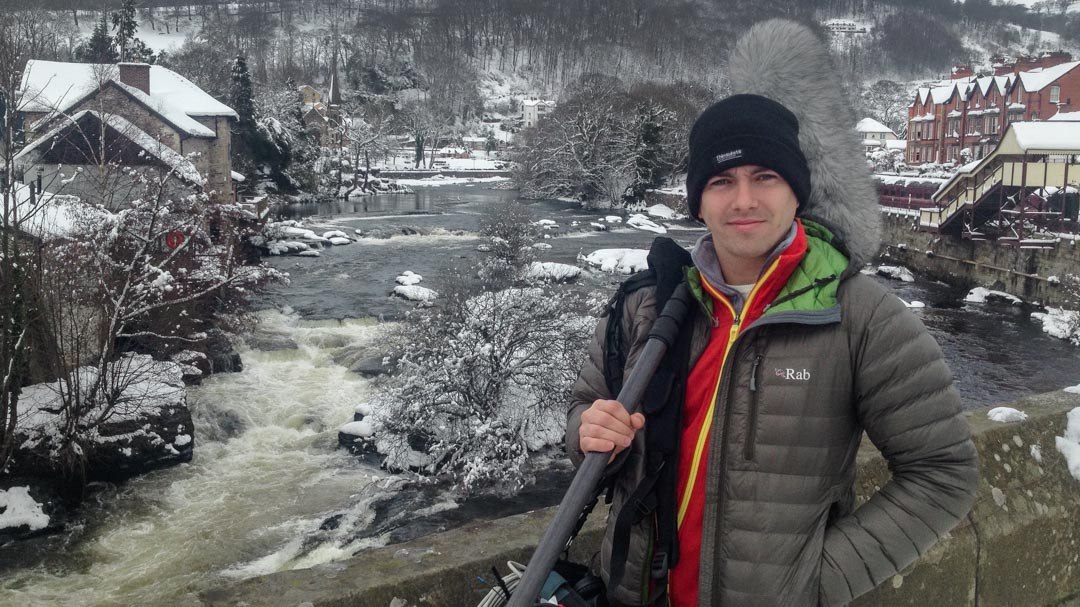

My biggest technical challenge as a location soundie happened early in my career when I worked on a film – entirely based on Mount Snowdon – in sub-zero temperatures.
What challenges do you face?
My biggest technical challenge as a location soundie happened early in my career when I worked on a film – entirely based on Mount Snowdon – in sub-zero temperatures. Not only was it bitterly cold, but we had such strong winds that the shoot was almost cancelled. You can imagine the battle I had with the wind on my mics…
I was using a second-hand Rycote windshield system that was given to me by a previous production. I’d had it for years, and it was already beaten up pretty badly when I got it. The previous owner had obviously held it too close to some lighting as most of the hair was singed.
To combat the wind, I used a Rycote Softie on my mic and then put that inside my beaten-up Rycote system. I lost some of the higher frequencies, but I had almost zero wind noise. I later got an e-mail from post-production sound (which never happens!), praising me on capturing such good audio in these conditions and mentioning that I had saved them a ton of work. My Rycotes got me through.
It wasn’t until my next shoot, when I saw another soundie with his gorgeous plush furry Rycote windshield system, that I realised my old, beaten-up Rycote that had just helped me capture some quality audio wasn’t normal at all. Needless to say, I bought a brand new one the very next day and could not believe the performance! I didn’t realise it, but I had been struggling for years on my old hairless one. I still own the old beast.
Nowadays, being in a different location every day in ever changing conditions, the one thing that takes the most punishment is my Rycote. Wind, rain, or snow, it takes it all and holds its ground. Just this morning, we were reporting in storm Gertrude and there’s absolutely no way I could do the job without quality gear like this.
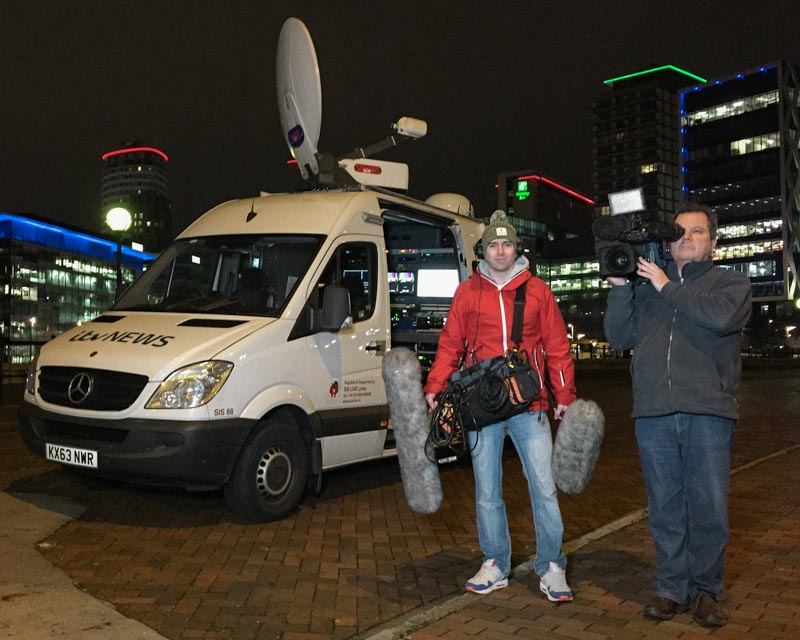

How do you deal with unwanted noise?
Unwanted noise is always a problem.
Dramas are more controlled and you can recce a location to see if there’s any potential problems. They have their own set of difficulties, but documentaries and news are different: you have no choice on location and you can’t tell people to be quiet. So, if there’s a source of unwanted noise, the first thing to do is locate it and see if you can stop it.
If this isn’t possible, I’ll decide which mic is best to use in order to get a better signal-to-noise ratio. If the noise can’t be eliminated, I’ll ask the cameraman to get the source of the noise in shot so that it makes sense to the viewer.
As for wind noise: never a problem with a Rycote. In fact, Rycote solutions are so good I have genuinely never had the need to look anywhere else.
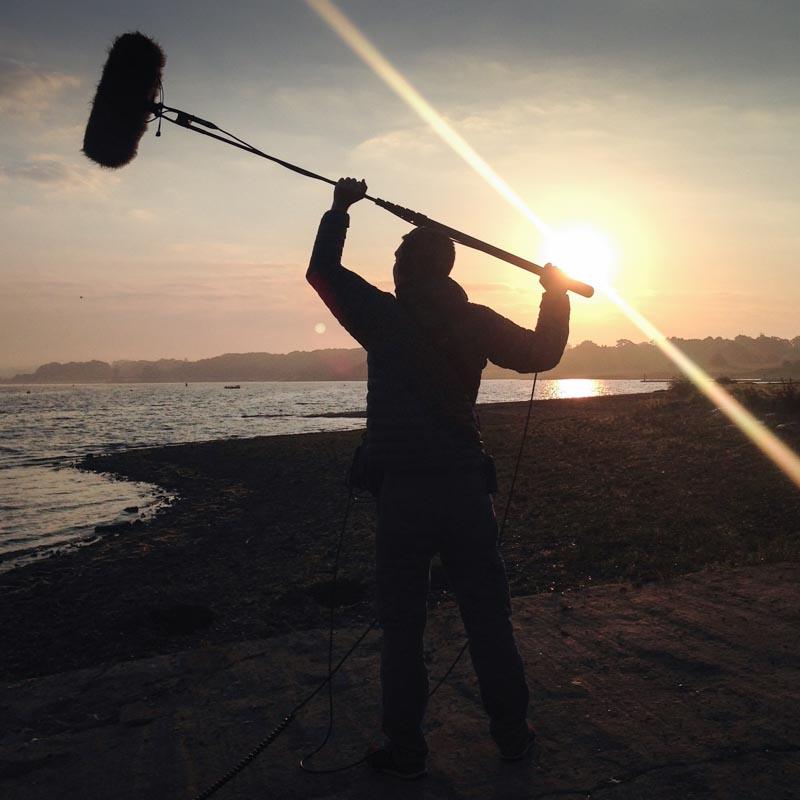

What are your proudest accomplishments? Do you have a favourite shoot?
My proudest accomplishment has to be working on ‘Captain America’ as a sound assistant.
Working on a Marvel film was the peak for me: I even have my wage slip framed. It’s amazing to see what goes into something like that, but boy were they long days! My favourite shoot has to be a film I did in Positano, on the Amalfi coast in Italy. It’s the most beautiful, relaxed place I’ve ever been to. It was a small production, the crew were amazing and it was a sound recordist’s dream. I was given an entire day to go and wander around the town and the beaches to record wild tracks of the waves crashing up the cliffs and onto the sand, and the bustling markets between the labyrinth of defending steps and alleyways. During the scenes, we shot completely noiseless audio and we even had unscheduled fireworks on our final scene of the shoot down on the breezy beach, where I luckily had my stereo mic already recording. It made me fall in love with sound all over again.‘At the very front end of the audio chain is my Rycote. I use it daily and I can honestly say that without it, the mics, the star quad cables and the mixer would all be useless. This accessory gets me through the most extreme conditions with the cleanest dialogue possible.’
Pete Bailey
Any interesting stories you’d like to share?
Working on a documentary following Liverpool FC called ‘Being Liverpool’, we were pretty close to the players the entire time.
Fortunately/unfortunately for me – depending how you look at it – I knew nothing about football or who the players were. Each morning before shooting, I would have breakfast in the players’ canteen and have a chat with the caretaker over cereal. I thought he related to me as a clueless non-fan, so we got on great!
A few weeks into the shoot, I decided I should probably Google the team and learn the players’ names. Up popped a team photo, and there he was in the middle: turns out I’d been having breakfast every morning with Liverpool’s manager, Brendan Rodgers. Nice bloke.
Over the years, you accumulate a lot of bits that were once an absolute necessity for a particular job – usually things you have to make – and it’s always worth keeping them just in case.
What’s in your kit bag and why?
For ‘Good Morning Britain’, I use a Petrol bag with the double compartment. One compartment contains my 4-channel Sound Devices mixer and the other is used as a pocket to put spare radio mics in for guests/interviewees.
The front pouch contains all of my batteries and lav windshields, and the outer pouches hold my Sennheiser G3’s: not the highest quality radios but perfect for news. I decided to hang my Audio 2020s up when the change from channel 69 to 38 happened. There wasn’t a need for such high-end radios in my current role on ‘Good Morning Britain’, but I still use my Sanken COS-11s.
My “proper” sound bag contains my Sound Devices 688 and SL6, with an Audioroot distributor and an Audio Wireless antenna distort unit for my radio mic. This is my posh kit that I use for other freelance work, and it typically doesn’t get the beating that my GMB gear gets.
For my boom, I have a choice of a Sennheiser MKH 416, 816 and Sanken CS-1, depending on the location/environment I’m in. I usually use my CS-1 for interiors but the majority of the time I use my 416. It’s a versatile mic and it can cope with almost anything.
At the very front end of the audio chain is my Rycote. I use it daily and I can honestly say that without it, the mics, the star quad cables and the mixer would all be useless. This accessory gets me through the most extreme conditions with the cleanest dialogue possible.
I often say that my big ‘odds-and-sods’ bag is like my garage. It’s full of things I may never use but which may come in handy at some stage. Over the years, you accumulate a lot of bits that were once an absolute necessity for a particular job – usually things you have to make – and it’s always worth keeping them just in case. You’ll also buy all sorts of connectors, cables, different types of mics and even different coloured lav mics.


How have you seen the industry change? What does the future hold?
I’ve seen technology change at an incredible rate over the last 10 years. Everything is now completely digital and there are lots of different cameras to choose from which are likely to become outdated in the next year or two. Even lighting has changed. Sound, however, seems to have had a steady adjustment to the advancement of technology, so you know you can invest in kit that will last a good few years and still be relevant.
Filmmaking has also become more affordable and there are more filmmakers getting their hands on very inexpensive kit. This is a great thing, but it may have a huge impact on the industry in the future.
The most important thing of all: make sure you love what you do. You must be passionate about the job and take pride in your work. As long as you have that interest and attraction to your role, skills can be learnt and developed along the way.
What advice would you give to those starting out in the world of professional sound?
The most important thing of all: make sure you love what you do. You must be passionate about the job and take pride in your work. As long as you have that interest and attraction to your role, skills can be learnt and developed along the way.
I would advise people to network like crazy. Build relationships and friendships with people who are at the same point in their career as you, and those already established in the industry. It’s the number-one key to success, as all jobs are word of mouth in this industry. I host a podcast called ‘Film Industry Pro‘ where I interview people in all areas of the industry: from award-winning sound recordist Simon Bysshe, to Arnold Schwarzenegger’s Stunt double Peter Kent. I get all sorts of crazy stories and incredible tips and advice.
Besides that, if you’re pursuing a technical role then buy your own professional kit ASAP. Never buy cheap gear: people won’t take you seriously. I started with a really cheap mixer which I used on my first professional production and completely messed it up because my kit wasn’t cable of handling the job.
I literally threw it out of the window, marched to the bank, got myself a loan and bought some serious kit, which immediately attracted attention from other professionals when they saw my gear list.
If you’d like to get hold of me then please contact me via email. I look forward to hearing from you.
Thank you very much for your time Pete, it was a pleasure talking to you.

